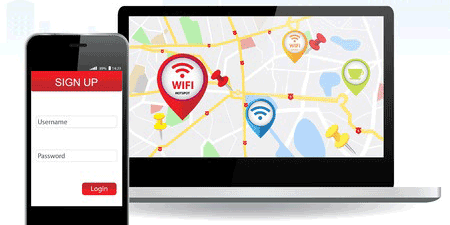Proximity beacons have plenty going for them. They're attracting attention and praise from both companies and consumers. U.S. based market research company Research Now has reported that 72% of consumers agree that seeing a relevant, contextual ad offer on their mobile phone while shopping in-store would have a big influence on their shopping decisions. Beacons make that happen. Their ability to trigger extremely relevant shopping experiences for consumers has tremendous potential.
But like any new tech that has anything to do with connecting to personal devices of consumers, security concerns are top-of-mind. While it's understandable that companies and consumers have concerns, many of the claims about the vulnerability of beacons are simply not true.
Busting Four Myths of Beacon Insecurity
Here is a concise summary of some of the most prominent myths and why they are easily busted:
- Myth: Beacons send content. The beacons themselves do not contain or broadcast content. They simply send a specific signal ID, and if a consumer has the necessary app on their device to communicate with the signal ID, an action from the app is triggered. The apps have the content, and the user must voluntarily download them. The beacons are mere triggers that activation actions in the app.
- Myth: Beacons track consumer devices and collect their information. Users must enable location services and give permission in each app before a beacon can track the user. In other words, without the user's consent and without an app being downloaded, the tracking can't happen.
- Myth: Beacons can grab your GPS coordinates. The only thing that beacons are equipped to do is broadcast identifier signals. That's it. The only thing that could locate your longitude and latitude is a mobile app that you voluntarily download -- an app that could use the beacon's broadcast signal. Again, all of this requires your consent. And you would have control over what permissions you allow for any app you download.
- Myth: Beacons can transmit the information about one mobile device to another mobile device. As alluded to in the previous myths, the beacons are limited by a protocol that can only transmit signals one-way to nearby mobile devices. This same protocol has no ability to gather data or facilitate any kind of network in which one mobile device could learn about another mobile device.
Be Smart About the Use of Beacon Technology in your Marketing Efforts
If consumers are constantly bombarded with messages or content that is not of interest to them, they are likely to delete your app or revoke location permissions. If your company chooses to leverage beacon technology, it’s important to be as transparent as possible and clearly explain to the user how you are going to use their location data and what value they should expect from your app.
Interested in piloting a beacon program? We can provide more insights on beacon security and privacy concerns.



